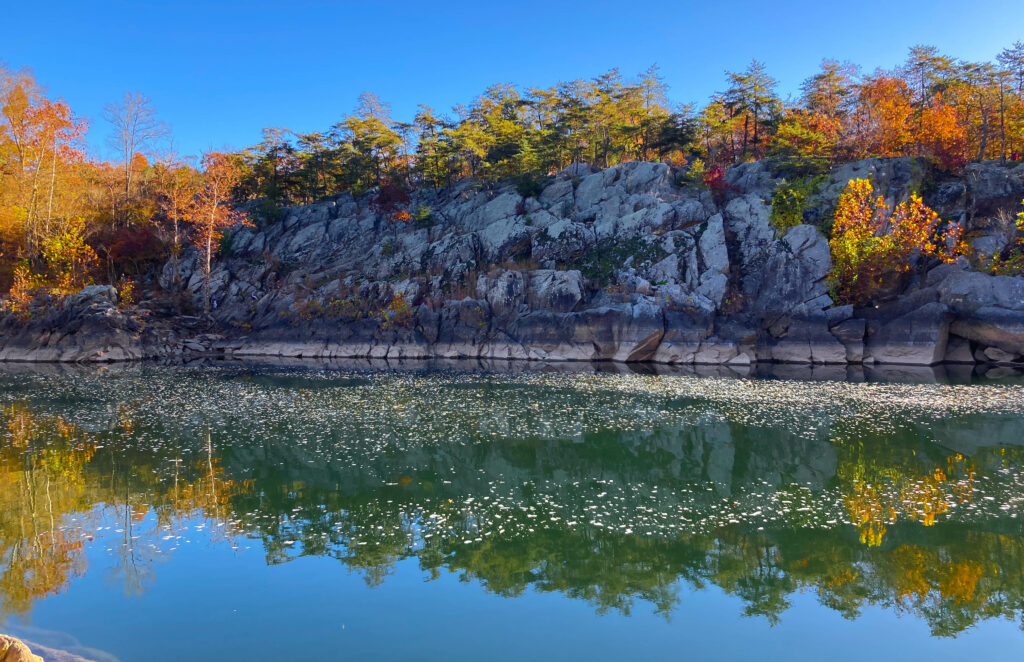Fifteen miles from Washington, D.C., the Potomac River gains speed and power as it cascades 76 feet down in less than a mile.
At the same time, the River’s banks narrow from about 1,000 feet wide to less than 100 as the water rushes through Mather Gorge, named for the first director of the National Park Service. The simultaneous dropping and thinning as the River flows over jagged rocks creates a dramatic section of falls and rapids.
Great Falls Park in northern Virginia offers spectacular views of the rushing waters, as well as 15 miles of trails suitable for hiking, biking, and horseback riding.
This post contains affiliate links. For more information, click here.
The National Park Service manages Great Falls Park as part of the George Washington Memorial Parkway, a scenic riverside roadway that links sites significant to American history, culminating with the first president’s Virginia home Mount Vernon.
The highlight of the Park is the Great Falls themselves. You can view them from three overlooks:
- Overlook 1 provides the closest view of the Falls, and reaching it requires climbing over rocks.
- Overlook 2 features a large platform that can be accessed via steps or a ramp.
- Overlook 3 also has a large accessible platform. It is furthest from the Falls, which gives you a broad view of the rushing waters.
It’s also possible to see the Great Falls from the Maryland side of the Potomac River at the Chesapeake and Ohio Canal National Historic Park.
Over the decades, I’ve hiked, picnicked, and ridden horses in the two Parks. I visited Great Falls Park last Saturday with my ladies’ hiking group, and we chose the wooded Matildaville Trail.
Rated easy-to-moderate, this 1.1-mile (one way) Trail passes the ruins of the town of Matildaville, which housed workers on the Patowmack Canal, a waterway initiated by George Washington and operated during 1802-28. The town was named by its founder, Revolutionary cavalryman Henry “Light-Horse Harry” Lee, for his first wife. Then-Colonel (later-General) Lee led America’s victory at the Battle of Paulus Hook in New Jersey, served as the ninth governor of Virginia, and was the father of Robert E. Lee.
Great Falls Park is a beautiful place for history buffs and nature lovers, and especially for those of us who are both.
What to Know before You Go to
Great Falls Park
Great Falls Park is located at 9200 Old Dominion Drive in McLean, Virginia. You can review the Park’s safety tips here.
The Park can be quite crowded. I strongly recommend arriving early in the morning, especially on Saturdays.
There are trails at all levels of difficulty, but they can be slick, rocky, and dotted with horse manure. I highly recommend wearing solid hiking boots or cross-trainers with a thick tread.
There are picnic tables where you may eat. If you want to reward yourself, one of my favorite restaurants in northern Virginia, L’Auberge Chez François, serves fabulous French cuisine in a country-inn atmosphere in Great Falls.
Nearby hotels include:
After my misspent youth as a wage worker, I’m having so much more fun as a blogger, helping other discerning travellers plan fun and fascinating journeys. Read more …

